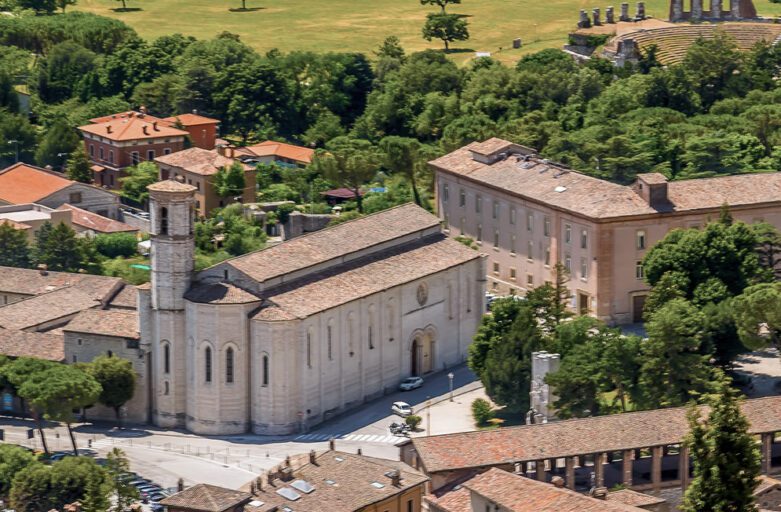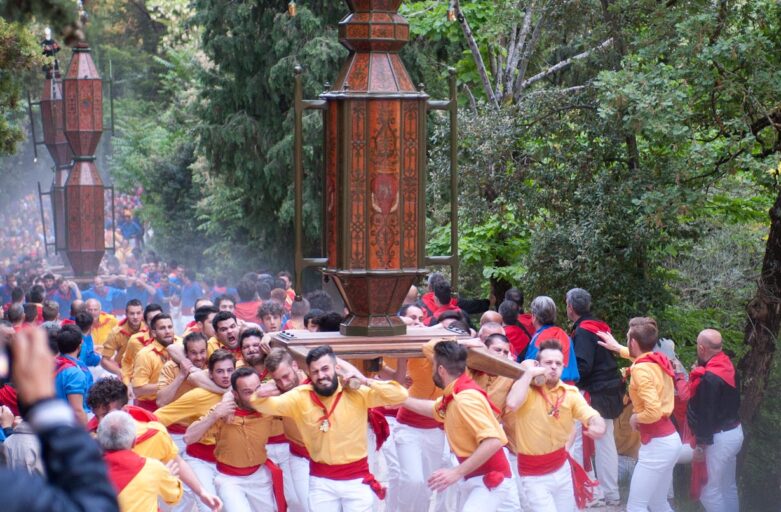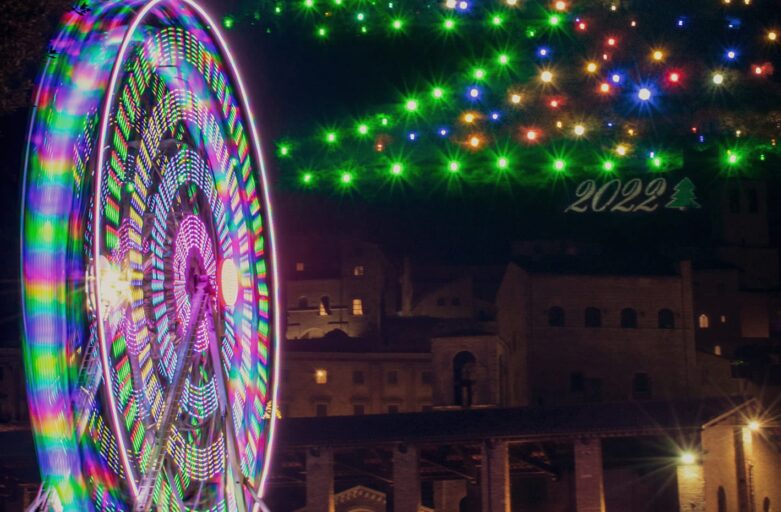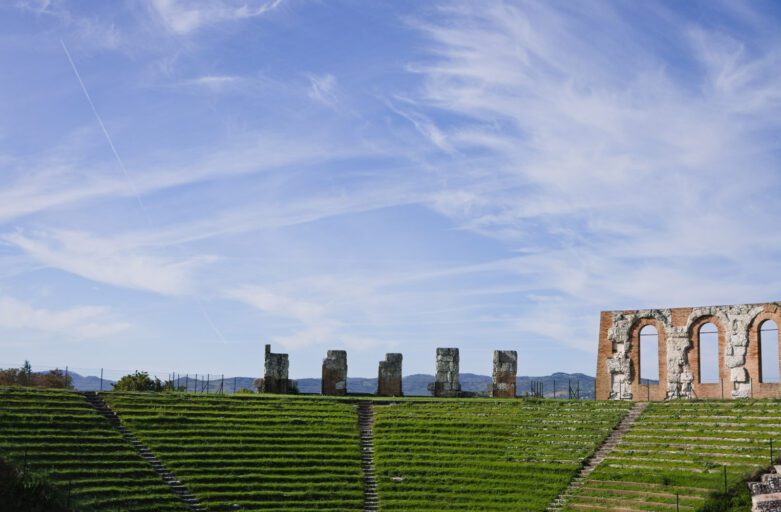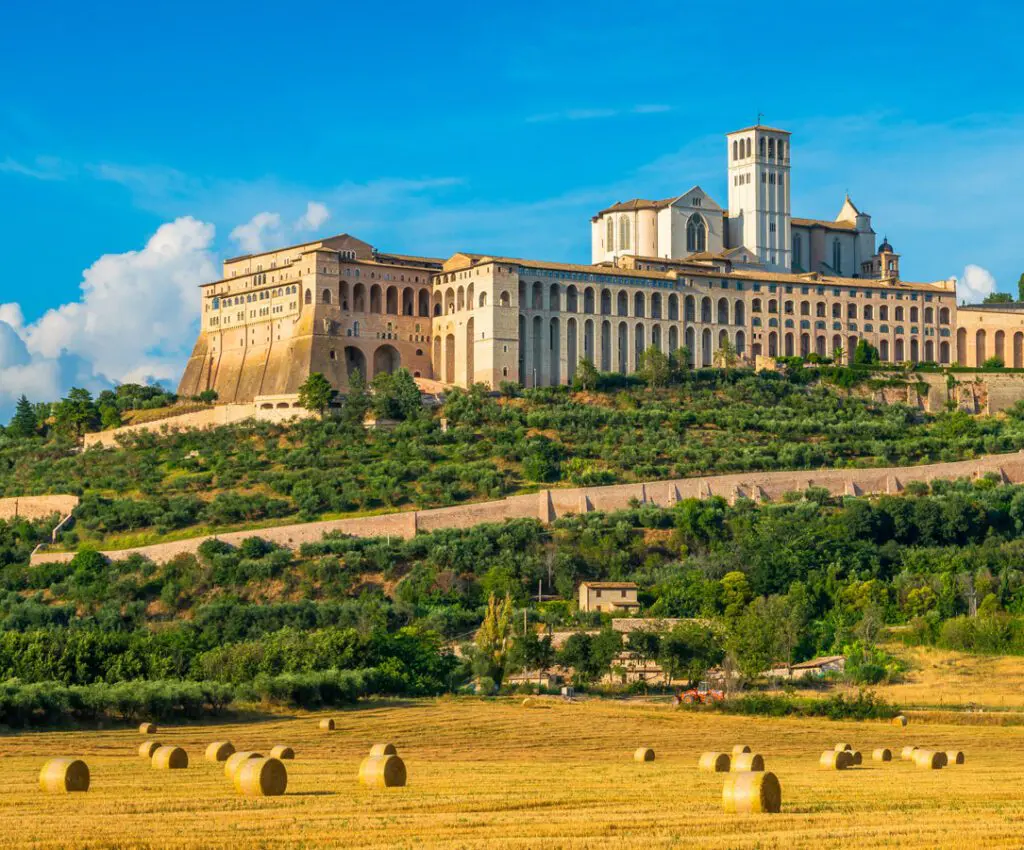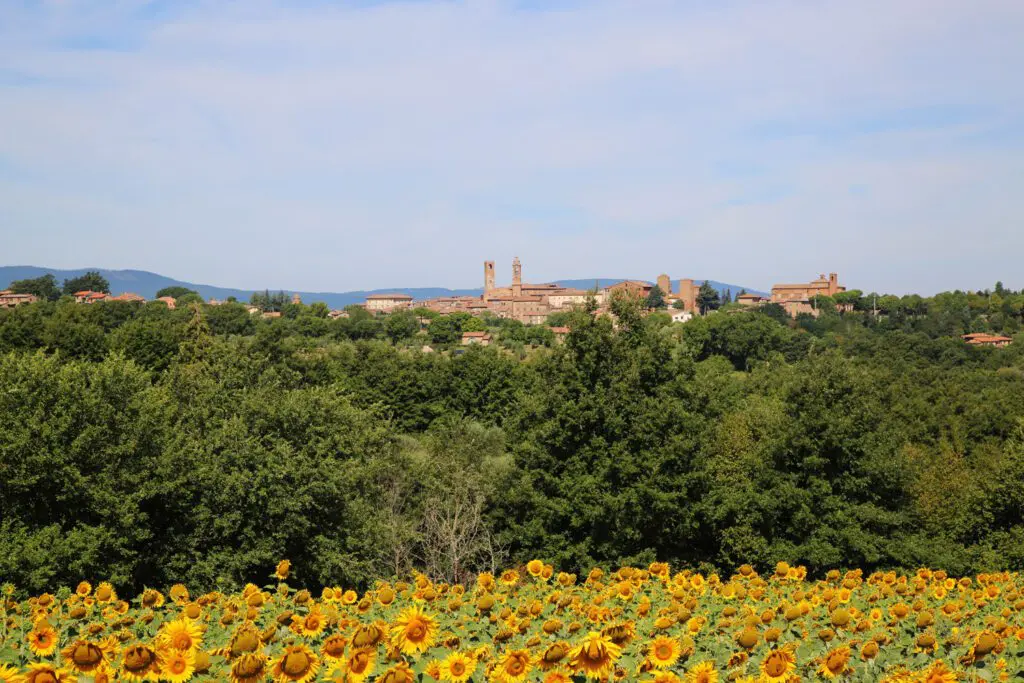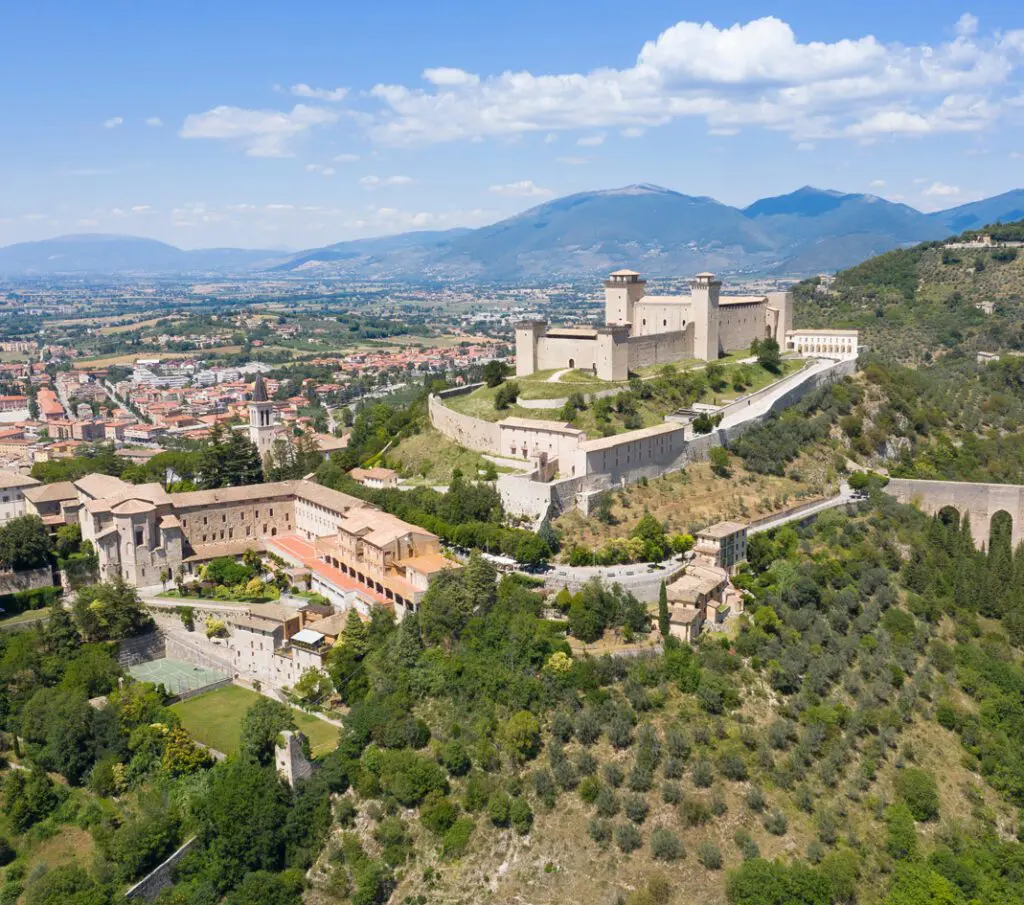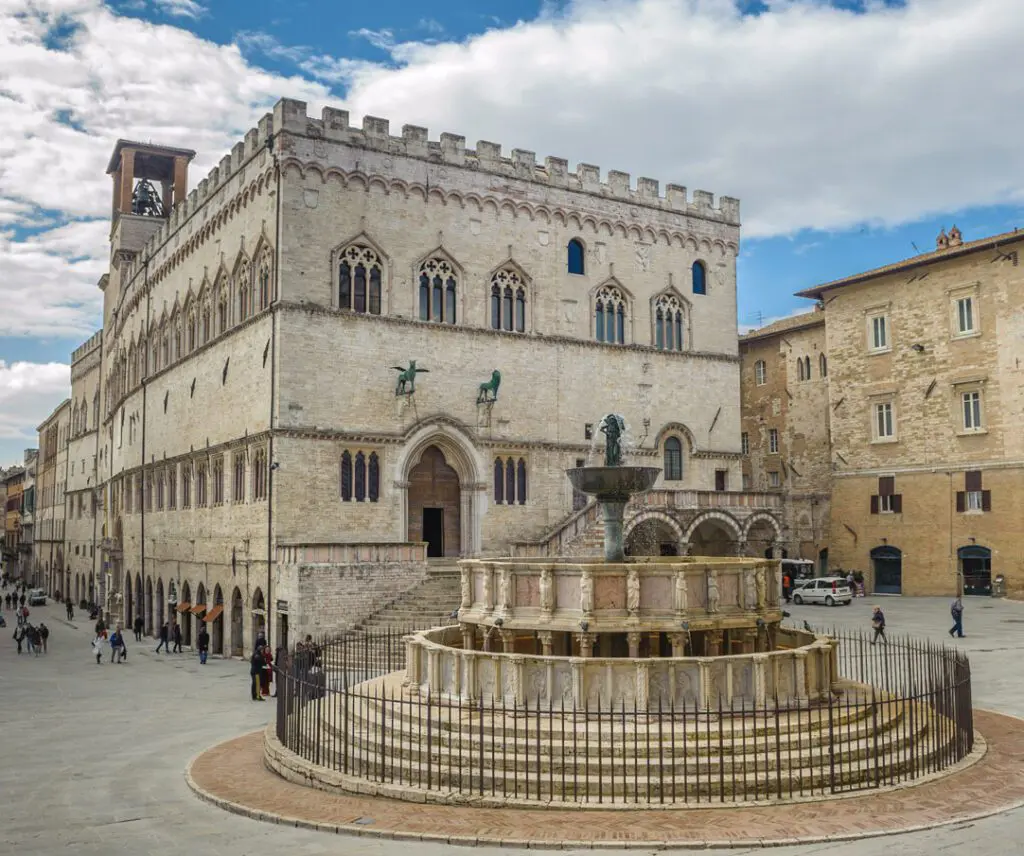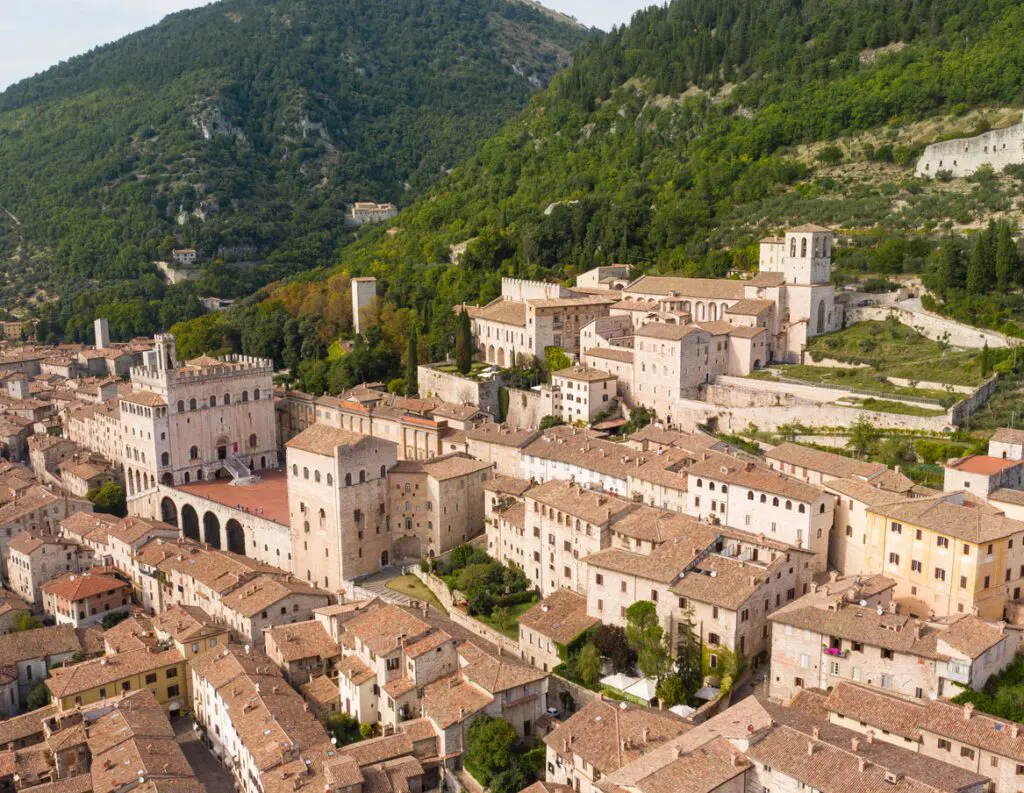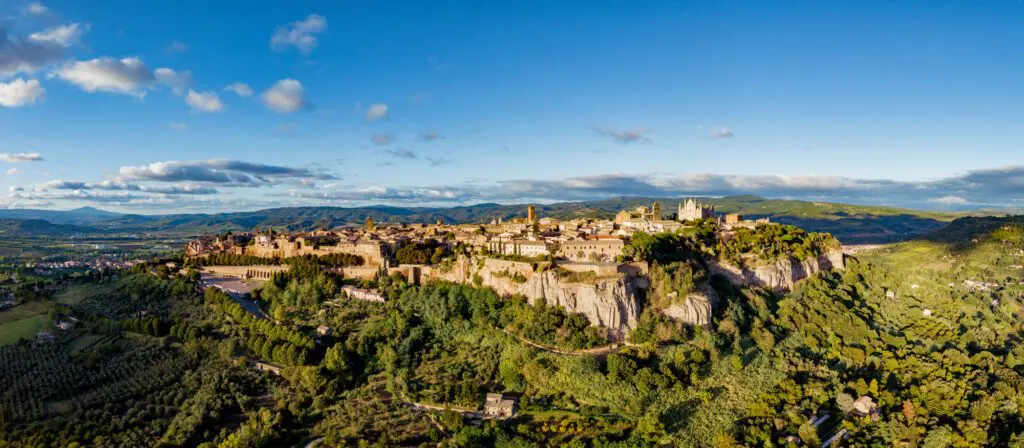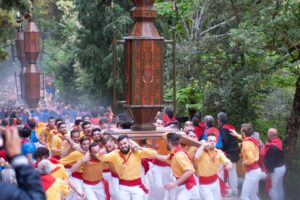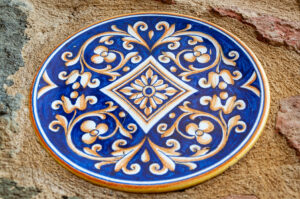Francis, the Man; and Gubbio
The story of Gubbio and Francis of Assisi means the discovery of an intense relationship, interwoven with travels, friendship, and feelings. Francis' father, Bernardone (“Big Bernard”), had frequent trades with Gubbio, often taken care of by Francis himself, who therefore happened more than once to get there for business. In Gubbio the wealthy Spada familiy, a.k.a. Spadalonga (respectively = sword, and long sword), active in the field of wool and fabrics, also “provided” Francis with the friendship of their young sons, with whom he would spend his days over there. One of them was among his comrades in arms in the 1202 war between Assisi and Perugia.
So, it comes to no surprise that, after Francis had publicly denuded himself in Assisi on a chilly February day in 1207 – for Jesus' and poverty's sake – he decided to go to the Spadalonga house, in the market square in Gubbio, where he knew he would be welcome. He remained there some three months, taking care of the poor, the outcasts, and the lepers in the Saint Lazarus Hospital, next to the Church della Vittorina (the name came from the brotherhood of Saint Mary of Victory). In 1213, Gubbio's bishop gave Francis the church for free; it would become the seat of the first Franciscan community there.
The Spadalongas, with their loving warmth, helped young Francis develop his enthusiastic answer to the pro-world call he had perceived in his heart. The courage in following his own path all life long would lead the Church to declare him a saint in 1228, i.e. not more than two years after his death.
Saint Francis' Church in Gubbio
The Outside
Thanks to a bull (document; from Latin bulla) by Pope Alexander IV, we learn that Holy Masses in Saint Francis' Church in Gubbio were celebrated at least since 1256.
The building had incorporated the Spadalongas' storehouse and part of their own house, as archaeological finds in the sacristy revealed. The façade, still unfinished, features a gate and a rose window in Romanesque style – the original window was however moved to Saint Francis' Church in Foligno in 1958. Everywhere in the building simplicity of shape prevails; the architectural lines become a little more lively only in the area of the three elegant apses, eastward. One of which provided the base for the octagonal belfry in the 15th century. Twelve one-arched windows follow the perimeter of the church; an interruption appears in the side wall where a secondary, protruding entrance is set. In this case, the Romanesque gate is surmounted by a refined Gothic rose window.
The Interior
Inside the church, fourteen pillars divide the space into three naves. The naves had been frescoed, but the paintings were then lost because of radical architectural changes in the 18th century.
On the walls of the rightward apse, see frescoes by the so-called Master of Saint Clare (13th - 14th centuries), a pupil of Giotto. In the apse vault and the upper apse part, frescoes by the “Master of Saint Francis,” dating back to 1270-80. While, in the left apse, the Episodes from Virgin Mary's Life were painted by Ottaviano di Martino Nelli in 1410-15. The 13th century paintings in the central apse, and the 15th century ones on the left, have been brought back to light in 1938 by removing the layers added in later centuries.
Now more in detail. In the central apse, well preserved is the Christ Blessing Enthroned, with saints and angels who look toward the Lord. On the pillar on its right, the frescoes represent Virgin Mary and the Child, beside a saint who might or might not be Apostle Judas Thaddeus.
In the rightward apse, two episodes from Saint Francis' life are depicted: the Spogliazione (Francis denuding himself), and Pope Innocent III dreaming that the Saint was supporting the whole Church. These scenes were made earlier than those painted by Giotto in Assisi's Upper Basilica; and Giotto, who would work on the same subjects some twenty years later, had probably seen these in Gubbio. In the lower area of this apse, finally, the Sforzolini Chapel is located, embellished with portraits of saints, and emblems of the Sforzolini family.
In the left apse, dedicated to Virgin Mary, we can see pictures of her birth and childhood based on apocryphal Gospels, that is, texts not included in official Christian Scripture; plus the most meaningful episodes in her life.
The Convent and Cloister
The cloister is embellished by frescoes of the 14th and 15th centuries. One of them, however, has been detached and moved to the Chapter ( = meeting) Hall; it shows The House of Nazareth Being Transported to Loreto. The other one is a Crucifixion.
Interesting is the 15th century staircase by which the friars accessed the cantoria (choir).
The adjoining convent, built about the mid-13th century, was then considered the most capacious existing; that's why it was called cento celle, “the convent with a hundred cells.” Here we can see the old seal of the Franciscan Custody (“place-keeping”), that shows Saint Francis and the Wolf
When Saint Francis Met the Wolf
“When Saint Francis lived in the town of Agobbio (Gubbio), in the Agobbio countryside a huge, hideous, fierce wolf appeared, that did not only eat animals, but even people.” This paragraph from The Little Flowers of Saint Francis, ch. 21, introduces the most famous episode in the Francis/Gubbio relationship, that happened in a year between 1220 and 1222. Namely, the miracle of the taming of the Wolf, with which several old sources and chronicles deal.
Probably in the wake of the peace alliance made by the Saint between Gubbio's inhabitants and the beast, every year in early September an Assisi-Gubbio pilgrimage on foot takes place, some 50 kilometers (30 miles) long. The pilgrims travel over the path first followed by Francis when he reached Gubbio in order to find shelter and comfort by his friends there.
INFO
Location
Largo S. Francesco, 06024 Gubbio PG
Guided Tours Schedule
Monday - Sunday:
08:00 - 12:00
15:30 - 19:30
Contacts
info@secretumbria.it
